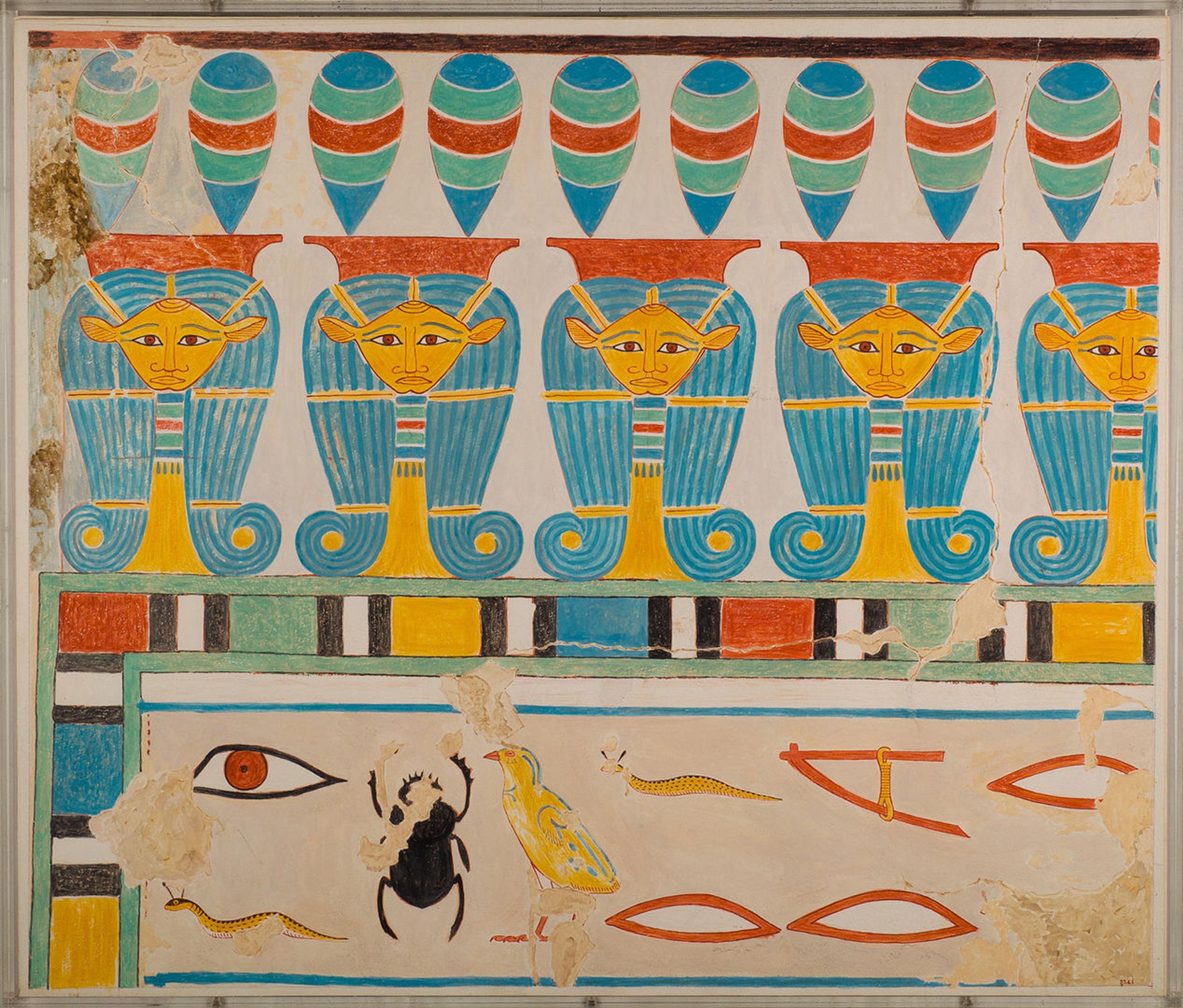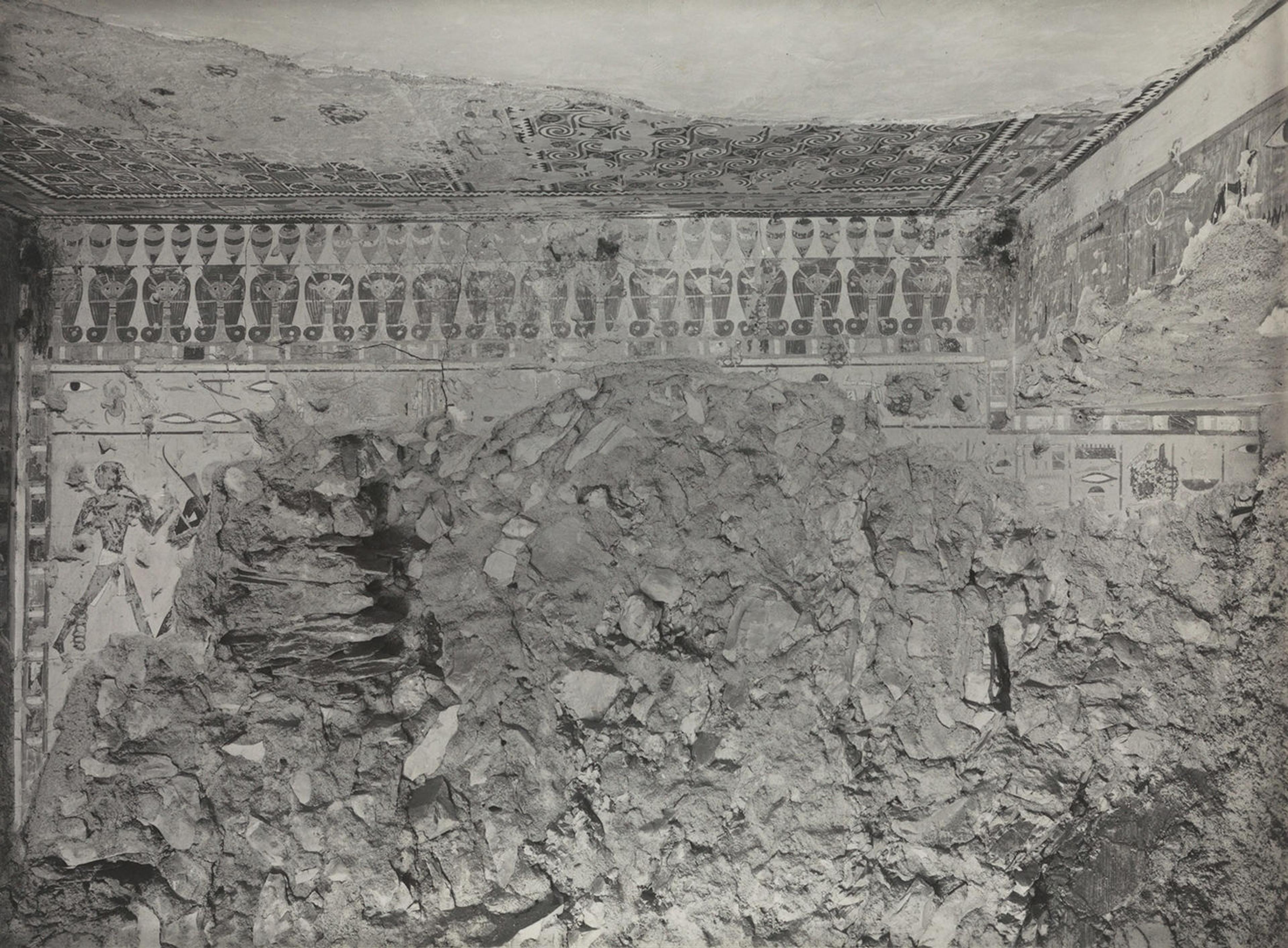Framing the Past is on view in Gallery 132 until November 1, 2024.
Viewed out of context, a detail can become a whole. Many of The Met’s modern facsimiles of ancient Egyptian wall paintings present isolated scenes and close studies of details. However, they copy images from larger compositions inside the tomb chapels of the Theban necropolis. In our new installation in Gallery 132, Framing the Past, we have paired a selection of paintings copied by the artists of the Graphic Section of the Met’s Egyptian Expedition with photographs by British photographer Harry Burton (1879–1940) selected from the Department of Egyptian Art Archives. The photographs show the highlighted scenes in their original settings, inviting us to reflect on how they relate to their immediate surroundings and the tomb’s three-dimensional space.
In the context of the Theban tombs, the scenes are never independent of each other but thematically combined and usually united by the figure of the tomb owner. Thus, the tombs’ decorative scheme has its own mechanism: its reception is shaped by the location of the scenes, their proximity to one another, and their integration in larger compositions. While the facsimiles record parts of the painted wall and the tomb design, they seem to deconstruct the decorative program of a given tomb chapel like the pieces of a jigsaw puzzle.

A detail from the tomb of Senenmut (Theban tomb 71), showing a Hathor-head frieze. New Kingdom, Dynasty 18, joint reign of Hatshepsut and Thutmose III (ca. 1479–1458 BCE). Facsimile painted in 1936 by Nina de Garis Davies. Rogers Fund, 1937 (37.4.1)
The photographs, in turn, add little to to the facsimiles’ detailed depictions, and in fact often capture areas of loss from which the facsimiles shy away. For example, the Hathor-head frieze copied from the tomb of Senenmut (Theban tomb 71) suggests a wall decoration in (almost) pristine condition. The photographs Burton took give a different perspective, as very little remains today of the wall paintings inside this tomb and the Museum’s artists recorded only a few details from the preserved parts. Nevertheless, they allow one to place the facsimile within the tomb’s three-dimensional space and its layout: here, one can see that the frieze and the associated hieroglyphic border unified the decoration of adjacent walls, but that only two fragmentary figures are preserved below. Thus, the facsimiles and photographs complement each other, inviting one to consider both detail and whole, as well as painting and space.

View into the transverse hall of the tomb of Senenmut (Theban tomb 71). Photograph by Harry Burton, 1935–36. Department of Egyptian Art Archives (T 2671)